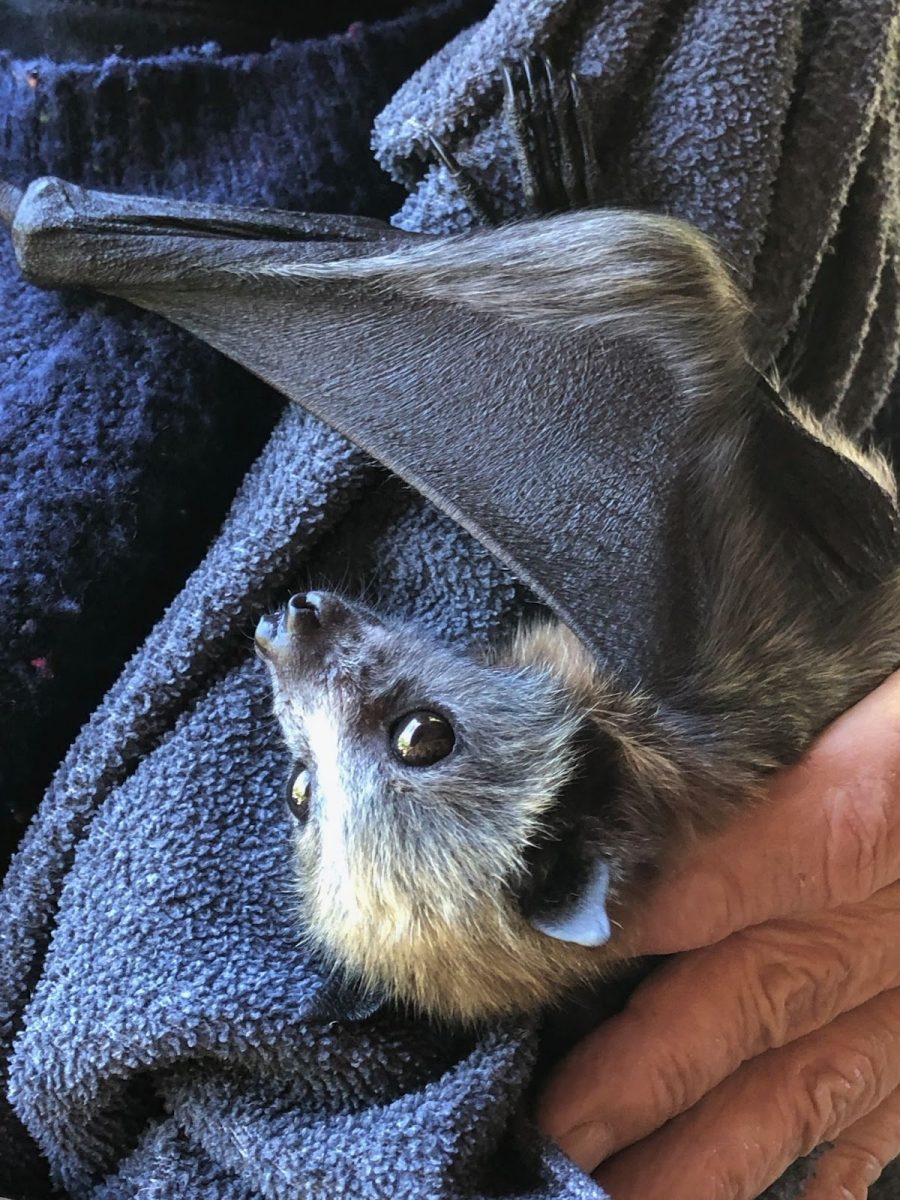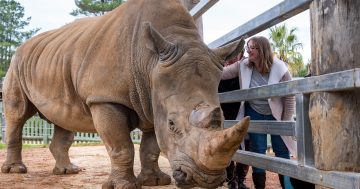
Injured flying foxes should only be handled by wildlife carers who have been vaccinated against the potentially deadly lyssavirus. Photo: ACT Greens.
People have been urged to avoid touching injured or distressed bats unless they want to be exposed to a potentially deadly virus.
The Southern NSW Local Health District (SNSWLHD) issued the warning after seeing an increase in the number of people needing vaccination and post-exposure treatment for lyssavirus this summer.
Six people presented across the area with exposure in December, which may not seem like a lot, but it’s two to three times higher than usual.
It’s also the highest number of people needing treatment since 2017.
Lyssavirus is a close relative of the rabies virus and has been found in species of flying foxes, fruit bats and insect-eating microbats.
The early symptoms of lyssavirus are flu-like, including headache, fever and fatigue. The illness progresses rapidly to paralysis, delirium, convulsions and death, usually within a week or two.
SNSWLHD public health director Alison Nikitas warned people not to attempt to help an injured or distressed bat.
“Lyssavirus can be transmitted from bats to humans through infected saliva from a bite or scratch and can easily be contracted through breaks in the skin,” she said.
“The best way to protect yourself from infection is to leave the handling of the animal to the trained experts. Call your local wildlife rescue group or local veterinarian who can help care for the animal.”
A bat can be infectious without showing any sign of sickness.
Ms Nikitas said while she couldn’t divulge exactly how each person had been exposed, bats stuck in fencing or fruit netting were common.
“People feel sorry for them and try to do the right thing, but you really should be calling a wildlife organisation to deal with them,” she advised.
“Please don’t touch the bats, get someone else [who’s trained] to do it.”
More than 800 flying fox rescues have been recorded in the ACT over the past years, about half due to net entanglement.
ACT Wildlife’s Denise Kay has previously told Region that rescuing the bats can be risky but volunteers are vaccinated against lyssavirus.
The animals are more active during the summer, but a large number of bats sometimes die due to prolonged exposure to heat or when they’re unable to find enough food.
Bat populations can be found anywhere, including in Canberra and on the South Coast.
The Eurobodalla Shire Council area currently has three known grey-headed flying fox camps at Catalina Golf Course, Tuross Head and a new camp in bushland at Moruya Riverside Park near Ryans Creek.
The Catalina camp has about 600 bats, the Tuross Head camp was established in December and has around 200 bats, while the Moruya camp has about 2500 individuals and includes mums with young.
Council environmental services manager Deb Lenson said the number of bats being seen in the region at the moment was quite small.
“They’re very important for the pollination of native forests, and we haven’t seen [large numbers] for quite a while due to the lack of food sources and the bushfires,” she said.
The Moruya camp has been set up in a spot that was the focus of a regeneration program a few years ago, where school kids helped plant new vegetation and bring the area back to life.
“I’m quite pleased that a native animal species is now utilising the area as a camp … I think we’re very lucky to have these animals,” Ms Lenson said.
People are encouraged to let council know if they discover a camp where the bats come to roost at night. They do travel long distances during the day to find food.
Grey-headed flying foxes are also known to camp at the Water Gardens in Batemans Bay, near the Moruya Showground, Moruya Heads and Narooma.
If you or someone you know has been bitten or scratched by a bat – no matter how minor the injury – immediately wash the wound with soap and water for at least 15 minutes.
An antiseptic solution that contains anti-virus action should then be applied before heading to a doctor or emergency department for further advice and treatment as soon as possible.
NSW Public Health Units will work with your doctor to assess the risk and organise, when needed, for post-exposure treatment for rabies.
“The post-exposure treatment is crucial for people bitten or scratched by bats because there is no effective treatment once the symptoms of Australian bat lyssavirus commence,” an SNSWLHD statement explained.
Contact or exposure to bat faeces, urine or blood does not pose a risk of exposure to lyssavirus, nor does living, playing or walking near bat roosting areas as long as bats are not handled.
If you see an injured animal in Canberra, call ACT Wildlife on 0432 300 033. If you’re in NSW, you can find the closest licenced wildlife rehabilitation officer online.













